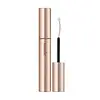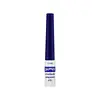What's inside
What's inside
 Key Ingredients
Key Ingredients

 Benefits
Benefits

 Ingredients Side-by-side
Ingredients Side-by-side

Water
Skin ConditioningButylene Glycol
HumectantCeramide AP
Skin Conditioning1,2-Hexanediol
Skin ConditioningAcorus Calamus Root Extract
PerfumingTromethamine
BufferingCarbomer
Emulsion StabilisingPentylene Glycol
Skin ConditioningPanthenol
Skin ConditioningSophora Flavescens Root Extract
AntioxidantDisodium EDTA
Houttuynia Cordata Extract
Skin ConditioningHydroxyacetophenone
AntioxidantEthylhexylglycerin
Skin ConditioningSaccharomyces Ferment Filtrate
HumectantGlycine Max Seed Extract
Skin ConditioningMorus Alba Root Extract
BleachingPlankton Extract
Skin ConditioningCamellia Japonica Flower Extract
EmollientVincetoxicum Atratum Extract
Skin ConditioningPanax Ginseng Root Extract
EmollientPolygonum Multiflorum Root Extract
Skin ConditioningHibiscus Sabdariffa Flower Extract
Skin ConditioningViola Mandshurica Flower Extract
AntioxidantMyristoyl Pentapeptide-4
Skin ConditioningBiotin
AntiseborrhoeicBetaine
HumectantAllantoin
Skin ConditioningGlycerin
HumectantCentella Asiatica Extract
CleansingAcetyl Hexapeptide-8
HumectantCopper Tripeptide-1
Skin ConditioningPalmitoyl Pentapeptide-4
Skin ConditioningWater, Butylene Glycol, Ceramide AP, 1,2-Hexanediol, Acorus Calamus Root Extract, Tromethamine, Carbomer, Pentylene Glycol, Panthenol, Sophora Flavescens Root Extract, Disodium EDTA, Houttuynia Cordata Extract, Hydroxyacetophenone, Ethylhexylglycerin, Saccharomyces Ferment Filtrate, Glycine Max Seed Extract, Morus Alba Root Extract, Plankton Extract, Camellia Japonica Flower Extract, Vincetoxicum Atratum Extract, Panax Ginseng Root Extract, Polygonum Multiflorum Root Extract, Hibiscus Sabdariffa Flower Extract, Viola Mandshurica Flower Extract, Myristoyl Pentapeptide-4, Biotin, Betaine, Allantoin, Glycerin, Centella Asiatica Extract, Acetyl Hexapeptide-8, Copper Tripeptide-1, Palmitoyl Pentapeptide-4
Water
Skin ConditioningButylene Glycol
HumectantCaffeine
Skin ConditioningPanthenol
Skin ConditioningNiacinamide
Smoothing1,2-Hexanediol
Skin ConditioningPentylene Glycol
Skin ConditioningAmmonium Acryloyldimethyltaurate/Vp Copolymer
Arginine
MaskingSodium Hyaluronate
HumectantCamellia Sinensis Leaf Water
MaskingGlutamic Acid
HumectantDisodium EDTA
Biotin
AntiseborrhoeicPueraria Lobata Root Extract
HumectantCamellia Sinensis Root Extract
PerfumingEthylhexylglycerin
Skin ConditioningWater, Butylene Glycol, Caffeine, Panthenol, Niacinamide, 1,2-Hexanediol, Pentylene Glycol, Ammonium Acryloyldimethyltaurate/Vp Copolymer, Arginine, Sodium Hyaluronate, Camellia Sinensis Leaf Water, Glutamic Acid, Disodium EDTA, Biotin, Pueraria Lobata Root Extract, Camellia Sinensis Root Extract, Ethylhexylglycerin
Ingredients Explained
These ingredients are found in both products.
Ingredients higher up in an ingredient list are typically present in a larger amount.
1,2-Hexanediol is a synthetic liquid and another multi-functional powerhouse.
It is a:
- Humectant, drawing moisture into the skin
- Emollient, helping to soften skin
- Solvent, dispersing and stabilizing formulas
- Preservative booster, enhancing the antimicrobial activity of other preservatives
Biotin is a B vitamin that is naturally produced by our bodies. It is also called Vitamin H.
Our bodies use biotin in the metabolism process. It also helps our bodies use enzymes and move nutrients around. A biotin deficiency can lead to brittle hair and nails.
More research is needed on applying biotin topically. However, taking biotin orally has been shown to help nourish the skin, hair, and nails. They play a role in forming skin-hydrating fatty acids.
Biotin is water-soluble. It can be found in foods such as fish, eggs, dairy, nuts, and meat. Vitamin H stands for "haar" and "haut". These are the German words for hair and skin.
Learn more about BiotinButylene Glycol (or BG) is used within cosmetic products for a few different reasons:
Overall, Butylene Glycol is a safe and well-rounded ingredient that works well with other ingredients.
Though this ingredient works well with most skin types, some people with sensitive skin may experience a reaction such as allergic rashes, closed comedones, or itchiness.
Learn more about Butylene GlycolDisodium EDTA plays a role in making products more stable by aiding other preservatives.
It is a chelating agent, meaning it neutralizes metal ions that may be found in a product.
Disodium EDTA is a salt of edetic acid and is found to be safe in cosmetic ingredients.
Learn more about Disodium EDTAEthylhexylglycerin (we can't pronounce this either) is commonly used as a preservative and skin softener. It is derived from glyceryl.
You might see Ethylhexylglycerin often paired with other preservatives such as phenoxyethanol. Ethylhexylglycerin has been found to increase the effectiveness of these other preservatives.
Panthenol is a common ingredient that helps hydrate and soothe the skin. It is found naturally in our skin and hair.
There are two forms of panthenol: D and L.
D-panthenol is also known as dexpanthenol. Most cosmetics use dexpanthenol or a mixture of D and L-panthenol.
Panthenol is famous due to its ability to go deeper into the skin's layers. Using this ingredient has numerous pros (and no cons):
Like hyaluronic acid, panthenol is a humectant. Humectants are able to bind and hold large amounts of water to keep skin hydrated.
This ingredient works well for wound healing. It works by increasing tissue in the wound and helps close open wounds.
Once oxidized, panthenol converts to pantothenic acid. Panthothenic acid is found in all living cells.
This ingredient is also referred to as pro-vitamin B5.
Learn more about PanthenolPentylene glycol is typically used within a product to thicken it. It also adds a smooth, soft, and moisturizing feel to the product. It is naturally found in plants such as sugar beets.
The hydrophilic trait of Pentylene Glycol makes it a humectant. As a humectant, Pentylene Glycol helps draw moisture from the air to your skin. This can help keep your skin hydrated.
This property also makes Pentylene Glycol a great texture enhancer. It can also help thicken or stabilize a product.
Pentylene Glycol also acts as a mild preservative and helps to keep a product microbe-free.
Some people may experience mild eye and skin irritation from Pentylene Glycol. We always recommend speaking with a professional about using this ingredient in your routine.
Pentylene Glycol has a low molecular weight and is part of the 1,2-glycol family.
Learn more about Pentylene GlycolWater. It's the most common cosmetic ingredient of all. You'll usually see it at the top of ingredient lists, meaning that it makes up the largest part of the product.
So why is it so popular? Water most often acts as a solvent - this means that it helps dissolve other ingredients into the formulation.
You'll also recognize water as that liquid we all need to stay alive. If you see this, drink a glass of water. Stay hydrated!
Learn more about Water